

Legend states that, when the baby Buddha-to-be was five days old, five wisemen were invited to look over his body and suggest a name for the boy. They noticed his body had 32 special marks, which indicated he had one of two fates: he would either grow to be a Chakravartin - a "wheel-turning" monarch who benevolently rules an empire, or a Buddha - an awakened religious leader who "turns the wheel" of Dharma, teaching humankind the way to nirvana.1
Obviously, the boy grew up to be a Buddha. This raises a question: what of the unfilfilled role of the Chakravartin? In answering this question, I hope to demonstrate that Buddhism puts forward a theoretical state which is characterized by righteousness, and places the well-being of all living things first and foremost among all concerns. Furthermore, I hope to convince you that this state may have been realized in the past, and inspire you to believe that it may be achieved in the future!

First, let's define what a Chakravartin is.
As mentioned above, the word means "wheel-turner," and refers to a religiously devout king who brings peace and prosperity to the realms he rules. Whereas the Buddha's "turning of the wheel" is understood as the introduction of the Dharma teachings to this world, the Chakravartin's "turning of the wheel" is meant to evoke a royal chariot rolling unobstructed across the territories it conquers and brings under the prosperous reign of the king. In doing so, the Chakravartin also spreads the Dharma.
Furthermore, the suttas discuss something called a "Wheel-Treasure," a sacred wheel which is said to present itself to a righteous king after he observes a holy day called uposatha (similar to the Judeo-Christian concept of the Sabbath). This is important, because the status of Chakravartin is not hereditary. The Cakkavatti Sutta (DN 26) tells of a time when a "just and principled" Chakravartin named Dalhanemi died. His son inherited the throne, only to find that the Wheel-Treasure had vanished. It only reappeared to the newly-crowned king after he performed his moral duties (which will be discussed later). It is the appearance of the Wheel-Treasure which makes a king a Chakravartin, and it only appears when a king is truly righteous.
It is described as rolling across the land, into the ocean, and back again, in all directions, with the king and his army following behind... every realm they reach comes under the dominion of the Chakravartin. He brings peace and prosperity to every territory he conquers.
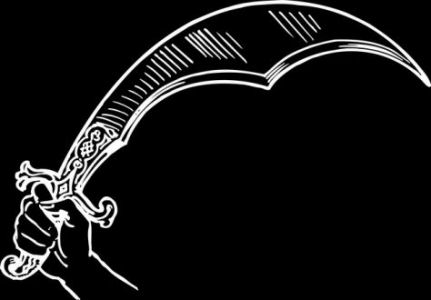
Here, we must wrestle with an uncomfortable implication - does Buddhism glorify militant imperialism?
In the above sutta about King Dalhanemi, it states that his sons crushed the armies of his enemies. Later, the sutta gives a prophecy of a future Chakravartin, King Sankha, and it also mentions that his sons will crush the armies of his enemies. In both instances, the sutta follows these statements with declarations about the peaceful reigns of these kings, "without rod or sword," following the conquering of the land.
However, other passages seem to imply Chakravartins may be able to conquer without the need for war. In the same sutta which discusses King Dalhanemi and his sons, the stories of his heirs are told, and no mention is made of military conquest. Instead, the text seems to suggest that, upon the arrival of the Chakravartins and their armies, rival kings offered themselves as vassals in exchange for guidance from the benevolent rulers. In each instance, these kings told their new vassals: do not kill, do not steal, do not commit sexual misconduct, do not lie, and do not consume intoxicants - the five Buddhist lay precepts. In addition, they are also told not to raise their taxes. Furthermore, two suttas discuss past lives in which the Buddha lived as a Chakravartin - the Mahasudassana Sutta (DN 17) tells of King Mahasudassana, and the Maghadeva Sutta (MN 83) tells of King Maghadeva. Neither of these stories make any mention of war or military conquest.
To further dispel the possibility that Buddhism glorifies warfare, we may also turn to scriptures not concerned with Chakravartins.
In the Yodhajiva Sutta (SN 42.3), a warrior tells the Buddha something he has been taught - that warriors who die in battle are reborn in a heavenly realm. The Buddha refutes this, stating that because warriors on the battlefield must be driven by hatred and the desire to kill, a warrior who dies in that state of mind would instead be subject to rebirth in a hellish realm. He further states that someone who holds this belief is deluded by Wrong View, and upon death will be reborn in either a hellish realm, or an animal womb. Clearly, the Buddha does not see warriors or warcraft as being worthy of celebration.
Several kings who ruled during the Buddha's life are recurring characters in the scriptures, including King Ajatasattu of Magadha, and King Pasenadi of Kosala. Neither were Chakravartins, but King Pasenadi is generally depicted in a positive (if still critical) light. King Ajatasattu, on the other hand, is shown to be cruel and aggressive - the Samannaphala Sutta (DN 2), for example, reveals that he killed his father in order to seize the throne. Both parts of the Sangamma Sutta (SN 3.14 & 3.15) tell of the time when he waged war on King Pasenadi. The scripture makes clear the point that Ajatasattu is the agressor and that his actions are wicked. King Pasenadi eventually wins the conflict, but decides to spare the life of his enemy, demonstrating both a moral and a military victory - the former being infinitely more important than the latter. Ultimately, the Buddha condemns warfare altogether. In a poignant verse, he declares, "Killing, you gain your killer - conquering, you gain one who will conquer you. He who has plundered gets plundered in turn."
Clearly, King Ajatasattu did not learn his lesson, because the Mahaparinibbana Sutta (DN 16) tells of the time when he was once more on the offensive, this time against the Vajjian people. The king sends a minister to the Buddha to inform him of his plans and to report back what the Buddha says in response. Ultimately, the Buddha prevents the conflict and convinces the minister that trying to defeat the Vajjians would be futile, because they are a noble and righteous people. Here, we see the Buddha once more valuing morality over military might.In the Pabbatopama Sutta (SN 3.25), while the Buddha is having a conversation with King Pasenadi, he criticizes kings who are preoccupied with military conquest instead of spiritual practice, calling them "intoxicated with sovereignty, obsessed by greed." The Buddha describes the inevitability of aging and death as the greatest enemies of all, ever-advancing, and since they can only be defeated through Dharma-practice, it is foolish to neglect one's religious duties for military activities.
In the Ratthapala Sutta (MN 82), a monk tells King Koravya that rulers who are driven by desire for conquest are like rich people who hoard their wealth; unsatisfied with "the near shore," greed and delusion drives them to keep wanting more. While they yearn for "the other shore" (which is a Buddhist metaphor for the end of craving), they die without ever having found satisfaction.Considering all of the above, we may safely say that Buddhism does not glorify militant imperialism. In this light, we may see the aforementioned references of the sons of Chakravartins "crushing the armies of their enemies" as an acknowledgment that a political state will necessarily see battle. These passages do not act as a celebration of the Chakravartin's bloodshed, but a reassurance of their ability to protect their state. This acknowledgment of the necessity of war can also explain why one of the Chakravartin's duties is to provide protection and security to all people (and animals) under his rule.

Now we may discuss the duties of a Chakravartin.
It's honestly awe-inspiring how progressive these ideas are, even 2,500 years later. As mentioned above, the Chakravartin is expected to provide protection, but he is also expected to pay money to the poor. In the Cakkavatti Sutta (DN 26) this is presented as one of the prerequisite activities for the appearance of the Wheel-Treasure. The Mahasudassana Sutta (DN 17) tells of King Mahasudassana having lotus ponds built for the public, and setting up charities along the banks of the ponds, where people may have free access to food, water, clothes, vehicles, beds, and money. He is described as sharing his wealth and the gifts given to him with his subjects.2
In fact, the Chakravartin is ultimately responsible for the material well-being of all people (and animals) within his dominion, and anyone having want for anything is seen as a failure of the ruler. It is his duty to ensure everyone is provided for, and that no one is without food, shelter, or healthcare. If these people cannot afford these things for themselves, the king is to provide it for them. If crime such as thievery, robbery, or even murder comes about, the king is expected - first and foremost - to address the material conditions which are driving people to commit these crimes, instead of merely punishing the wrong-doers (as seen in the Kutadanta Sutta and the Cakkavatti Sutta).
Capitalist cultists who have read this far may be foaming at the mouth, or rolling their eyes into the back of their skulls, so let us quickly reassure them that people must still work within the system of the Chakravartin's monarchy. It is certainly a welfare state, in that it is a state which ensures the welfare of its people. However, there are still farmers, still merchants, and still laborers, all of whom are expected to pay taxes to the king (along with the vassals from other territories). In the Buddhist monarchy, though, the king exercises his power (and his own wealth) to ensure that all living things have access to the necessities of life. Demonstrating this, in the Kutadanta Sutta (DN 5) the Buddha tells a story about a king who was advised by his minister to provide seed and fodder for farmers, capital for traders, and food and wages for government workers.
Buddhism also holds employers to very high standards. The Sigalovada Sutta states that employers must guarantee their employees an appropriate workload (according to the worker's ability), fair wages, healthcare, perks, and leave time. In return, workers are expected to work hard and be loyal to their employers.

The king's "noble duties" are so important, that when he fails to perform them, it is seen as the catalyst for societal decline.
The Cakkavatti Sutta tells the story of another one of King Dalhanemi's heirs, the first in the lineage to break with the righteous tradition of paying money to the poor and ensuring the well-being of everyone in the realm. A period of decline follows, where poverty becomes widespread, resulting in crime. When the king resorts to capital punishment instead of fixing the material causes of inequality, it leads to the complete collapse of the civilization, with murderers and thieves running rampant.
Eventually, certain groups of people are said to flee into the wilderness, establishing sustainable communes where they live moral lives secluded from the corrupt society. After some time, they emerge and rebuild a prosperous state. In the Buddhist political ideal, the monarch must ensure the welfare of all people not only because it is a moral requirement, but because failure to do so will lead to societal decay.
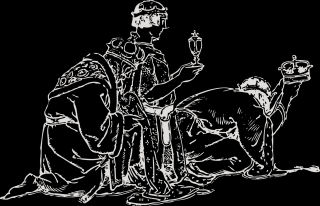
Now let's discuss the extent of the monarch's authority and importance in Buddhism.
I have demonstrated Buddhism explictly endorses a monarchical system. However, it is important to understand that monarchs are understood as being subject to religious customs and strict moral rules, to the degree that the Buddha and his sangha of monks and nuns are effectively superior. In the Aganna Sutta (DN 27), the Buddha states that even though people from the clan he was born into, the Shakyans, show deference to King Pasenadi, the king himself shows deference to the Buddha. He bows down to him, and greets him with his palms joined.
In the Samannaphala Sutta (DN 2), King Ajatasattu acknowledges that if one of his servants were to leave and become an ordained monk/nun, he would have to bow to his former servant, and has no right right to make them return to his service. In the Angulimala Sutta (MN 86), King Pasenadi bows to a newly-ordained monk. This monk, Angulimala, happened to have been a wanted serial killer before the Buddha found him and converted him. The king did not arrest him, acknowledging that he now belonged to the Buddha's order.
Clearly, the Buddha was not subordinate to kings, and even the most freshly-converted monk shared a degree of this seniority. They still addressed kings respectfully and politely, even when admonishing them, but the degree to which they spoke freely with their rulers is remarkable. In the Donapaka Sutta (SN 3.13), after King Pasenadi struggles to sit down due to his physical condition, the Buddha tells him he should be more mindful about his diet. In the Kannakatthala Sutta (MN 90), as the Venerable Thanissaro Bhikku commentates in his translation, the Buddha has another interaction with King Pasenadi in which he seems to be gently teasing the king for being beholden to the demands of his wives. In the Ratthapala Sutta (MN 82), a monk named Ratthapala tells King Koravya that he is old, growing decrepit, and when he dies, no one will be able to save him. The monk grimly reminds the king that his wealth and the pleasures he surrounds himself with are worthless, and states confidently that the life of a monk is better than the life of a king.
Even in the case of a Chakravartin, the Dhammaraja Sutta (AN 5.133) declares that the benevolent monarch is, himself, the subject of a higher king - Dharma (which can be translated as principle or truth, and the word is often used to refer to the Buddha's teachings). In other words, the highest authority is not the monarch, but instead, is the moral system which should guide all levels of society. The sutta further demonstrates the Buddha's superiority by stating that, although the Chakravartin's power to provide protection for his realm cannot be undermined by any human, the Buddha's power to provide protection for his followers (by teaching them the ultimate truth) cannot even be undermined by gods.

To summarize, the Buddhist scriptures present an idealized version of a monarchy ruled by a righteous Chakravartin as the ideal state. However, this state needs to be contextualized in a religious framework where the king's authority is only legitimized through adherence to the religious values of that framework; these values place the well-being of living things above all other concerns. As such, the ultimate authority, higher even than the monarch, is Dharma, as laid out in the teachings of the Buddha and embodied by his followers.
I am not attempting to put forward a detailed political theory - such an endeavor is beyond the scope of this website, and quite frankly, beyond my ability as a writer. So far, I have only aimed to explore the way the Buddhist scriptures discuss politics in order to present a cohesive picture from the various relevant suttas. However, I will admit openly that I truly believe this monarchy of a Chakravartin is the ideal state. It is fair to criticize the idealistic nature of this belief, and you may even call me foolish or delusional. However, in the next section, I hope to demonstrate that this state has been achieved within recorded history, during the reign of King Ashoka of the Mauryan Dynasty. If I am able to convince you this state has existed before, perhaps I can convince you it may exist again!

Our story begins in 326 BCE. Alexander the Great had blazed a trail through Central and Southern Asia, leaving conquered territories in his wake. He and his army crossed the Hindu Kush mountains and marched into India. They stopped at the Indus River, and Alexander demanded the surrender of two kings: King Ambhi (also known as Omphis or Taxiles, who ruled from the capital city of Taxila/Takshasila), and King Porus, a relative and enemy of King Ambhi.3 King Porus had previously killed King Ambhi's father, so it seems King Porus ascended to the throne ready for revenge.
Despite the boldness of Alexander's demands, it seems he was nervous about the possibility of conflict. He and his armies were far from home and growing battle-weary after an extensive campaign. It must have been a great surprise, then, when King Ambhi surrendered immediately, sending gifts and offerings. It's likely that the prospect of helping the Macedonian conqueror destroy King Porus was more appealing than gaining a second enemy. In any case, Ambhi was rewarded for his eagerness to bring his kingdom into the fold of the Macedonian war machine.
Together, their forces marched against King Porus in the Battle of the Hydaspes. They won, and Alexander sent Ambhi to his relative to deliver terms of surrender. After Porus almost killed Ambhi, Alexander himself intervened, and Porus finally surrendered. Apparently, Alexander was impressed by his leadership skills, and both Ambhi and Porus were allowed to remain in positions of leadership as "satraps," who governed the territories Alexander conquered.

Now that his dominion stretched into the Indian subcontinent, Alexander set his eyes on the Nanda Empire further to the east, situated in the Kingdom of Magadha. However, word was spreading about the Nanda Empire's military might, and Alexander's troops were near the breaking point from combat fatigue. For years they had been ready to go back home, and in the summer of 326 BCE, they stopped at the Beas/Hyphasis River and rebelled, refusing to advance. Alexander was forced to withdraw from India.
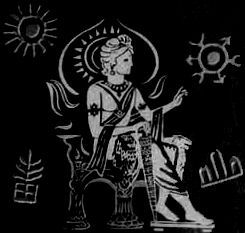
The details of what happened next are lost to time, but in the wake of Alexander's campaign, Northern India had become unstable, and his retreat left a power vacuum. By 321 BCE an Indian king named Chandragupta Maurya, with help from his advisor Kautilya, had risen as the newest superpower. He began conquering Northwest India, defeating the remnants of the Alexandrian satrapies, and even managed to topple the Nanda Empire. By 312 BCE he had conquered the entire North and Northwest of the subcontinent. His next target was the Seleucid Empire to the west, founded by Seleucus I Nicator - one of Alexander's generals - in the aftermath of the Macedonian ruler's death.
Two years of war ensued, and in 305 BCE Seleucus I Nicator surrendered. He relinquished his territory west of the Indus River, and gave his daughter as a wife to the Indian king to secure a marriage-alliance. With Chandragupta's reign in India firmly established, he founded the Mauryan Dynasty, and in 297 BCE his son Bindusara ascended the throne.
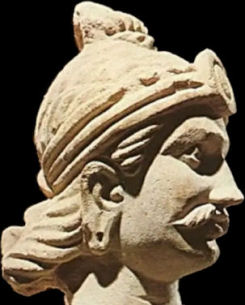
The history of Bindusara's reign is shaky, at best. Little can be said with certainty. By the time of his reign, the Mauryan Dynasty had expanded into some of Southern India, though whether or not this was Bindusara's doing or just part of the territory he inherited is uncertain. For the most part, Bindusara's historical signifance lies in fathering his heir: Ashoka.
Later Buddhist histories claim that when Prince Ashoka was 18, his father sent him to Taxila/Takshasila - an important city which connected to the silk road - in order to stop a rebellion. He succeeded, and proved to be an increadibly skilled leader. He was next sent to govern in Ujjain, another important city. Here, he met and married his first wife, Devi, a commoner believed to have been a Buddhist and even part of the Shakya clan (which the Buddha came from). They had two children together: a son named Mahendra, and a daughter named Sanghamitra. Eventually, he was recalled to the capital Pataliputra, and he left his family behind.
Around 273 BCE, King Bindusara died. The details of the subsequent events are debated, but a civil war between the possible heirs seems to have broken out, and in 270 BCE, Ashoka emerged as the new Mauryan king.
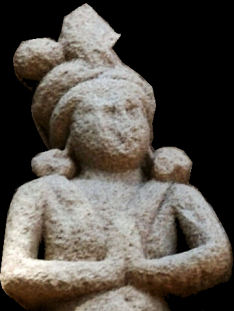
Little can be said with certainty about the details of Ashoka's life. Stories are recorded in various sources from the Common Era, long after Ashoka's reign, derived from Indian and Sri Lankan histories. These different sources often give conflicting details alongside legends and should be approached with caution when looking at their biographical contents.4
Much more interesting, in my opinion, are the various Rock Edicts that Ashoka left behind. These are writings which he had inscribed into stone monuments or natural rock surfaces throughout his kingdom. They are important for several reasons: First, they are the oldest physical pieces of evidence for the existence of Buddhism - older than even the earliest Buddhist manuscripts discovered so far. Second, they demonstrate the geographical extent of Ashoka's territory, since the edicts are spread out from modern-day Afghanistan down into southern India. They were also written in a variety of languages, showing the cultural diversity of the Mauryan Dynasty. Perhaps most importantly, these edicts tell the story of Ashoka's conversion to Buddhism and his conviction to fulfill the noble duties of a Buddhist king.5

Early in Ashoka's reign, he waged war on a kingdom called Kalinga, a territory that had previously managed to stay out of his grandfather Chandragupta's grasp. In his 8th year as king, around 262 BCE, Ashoka crushed the forces of Kalinga once and for all, finally bringing it under the control of the Mauryan Dynasty. In the 13th Major Rock Edict, Ashoka recounts that 150,000 men were "deported" (into slavery), 100,000 died in battle, and many more died in the aftermath of the war. After observing the carnage of the conflict, Ashoka was shaken deeply to his core, and he resolved to repent for the suffering he caused by devoting the rest of his life to what he called "the conquest by morality." Soon thereafter, he became a lay Buddhist, and in the various rock monuments, he inscribed records of his activities and declarations of his intentions to all of his subjects, whom he now called his "children," and even to neighboring territories. Since the contents of the edicts are important, let's take a brief look at them.

The first edict inscribed is known as the Kandahar Bilingual Rock Inscription, created during the 10th year of Ashoka's rule. Here, Ashoka declared that he had inspired moral practice throughout his territory and beyond, and that living things are thriving as a result. The king declares that he has abstained from killing living things, even making his hunters and and fishermen (who provided food for the palace, presumably) cease their activity.
Next are the Minor Rock Edicts, which began being inscribed around his 11th year as king. This collection is the most outwardly Buddhist, and testifies to the significance of Buddhism in Ashoka's reign. It is in the First Minor Rock Edict that Ashoka declares he had been an upasaka for 2 1/2 years, although he admits that he was not very dedicated until another year or so had passed. After this, he drew closer to the sangha (Buddhist monastic community), and it was this change that Ashoka credits for enabling him to return India to a state where "the gods mingle with men." He praises Buddhism, as well as the fruits of its practice, and insists that all people, both "great and humble," can achieve them by putting forth the effort to live moral lives. He urges all his people to do so, and be living examples to the rest of the world. In the Third Minor Rock Edict, he pays obeisance to the Buddha, the Dharma, and the Sangha (the Three Jewels of Buddhism), and he recommends that monks and nuns (and laypeople, following suit) read specific scriptures in order to ensure the longevity of the Buddhist faith.

The next collections, the Major Rock Edicts and the Minor Pillar Edicts, overlap somewhat, with the texts contained in the collections ranging from Ashoka's 12th year into the 20th year. The First Major Rock Edict forbids the killing of living beings, as well as festivals (on the grounds that they are a cause of harm). He declares that he had, by that point, reduced the number of animals killed for food in his palace, but going forward, even those few would be spared. The Second Major Rock Edict records that Ashoka had provided medicine and medical facilities (for humans and animals alike) throughout his territories and even along the borders for neighboring countries. In addition, fruit trees and water wells were placed alongside the roads to be used by travelers and their animals. The Third and Fifth Major Rock Edicts records how, in his 12th and 13th years as king, Ashoka created the "Mahamatras," a class of officials which would be sent to territories in the realm in order to communicate with religious sects to promote morality, ensure the welfare of the people, provide money to the needy, work to free prisoners, and ensure that charities were being supported. In the Sixth Major Rock Edict, Ashoka declares that messengers should inform him of the people's affairs no matter what time it is or what the king is doing, since "no duty is more important than the welfare of all men." This demonstrates Ashoka's commitment to his people. He mentions that he is working to repay his "debt to living beings" by ensuring their happiness in the present life, and establishing the conditions to attain well-being in the next life through moral practice.
Despite his own Buddhist faith, in the Seventh Major Rock Edict, Ashoka declares that all religions should exist freely in his realm, since they are all beneficial. In the Eighth Major Rock Edict, Ashoka records times where he made "tours of morality" instead of the usual "pleasure tours" which kings would perform in the past. In these tours, Ashoka would visit religious communities in order to make offerings, as well as with citizens in order to provide them with gold and discuss morality with them. In the Ninth Major Rock Edict, Ashoka demonstrates that his commitment to religious freedom does not preclude speaking out against the follies of other religions. In this edict, Ashoka speaks out against "useless" ceremonies, presumably the elaborate rituals performed by Brahmins, which the Buddha also criticized in his lifetime. While the Brahmins claimed that the Vedic rituals - which only they were allowed to perform - were the key to spiritual liberation, Ashoka declares that it is infintely more beneficial to treat slaves and servants6 with dignity and respect, the elderly with reverence, animals with gentleness, and genoristy to religious figures.
In the 10th Major Rock Edict, Ashoka expresses a desire to inspire people in his own time and in the future to practice morality, and in the 12th he once again proclaims his commitment to religious tolerance, insisting that no one should praise their own religion while unfairly criticizing the religions of others. The 13th Major Rock Edict is perhaps the most important, because it is here where Ashoka recounts the story of the Kalinga War, confesses how terrible it was, and expresses his remorse for the suffering he caused. He declares that his commitment to morality and leading his people in moral practice is part of his repentence. Instead of military conquest, he has since practiced "conquest by Dharma," spreading his moral practice (and sharing its benefits) throughout his territory and into neighboring countries. This edict also has a message for "forest tribes" (which had historically presented problems for Indian states) - while reiterating the king's commitment to peace and nonviolent solutions to problems, this message firmly warns that lethal force will be dispensed if necessary, revealing that there must have been conflict with these people during Ashoka's reign, or at the very least that the possibility for conflict was of concern to the king. He also implores his future heirs to follow his example and abandon military conquest. However, he insists that if they absolutely refuse to abandon imperial expansion, they would be wise to practice restraint and mercy - still, he doubles down on his statement that "conquest by Dharma" will be the best way to lead their people.
The 13th Major Rock Edict was not inscribed in the monuments made in Kalinga - in their place are two Separate Rock Edicts, which are not found in other territories. Both of these are primarily instructions given to some of his officials in the area, including one of his governing Princes and officals called Mahamatras. The First Separate Rock Edict tells these officials that Ashoka considers all people his "children," and as such, they should be impartial and fair when administering justice in the territories they oversee. He demands that they hear the message of this inscription repeatedly every so often, and tells them that once every 5 years, an outside Mahamatra will come to check on things and ensure all is well. In the same way, one of the Princes in Ujjayini will send another Mahamatra every 3 years, and again, one from Taxila will be sent as well. This relatively complicated measure of oversight shows a commitment to fairness and prevent corruption. The Second Separate Rock Edict instructs officials to ensure the "unconquered border tribes" that they have no reason to fear Ashoka's kingdom, because he has given up military expansion. Instead of being afraid, he wants them to be inspired to practice morality, and the officials are instructed to ensure those people that the king loves them "like his own children."
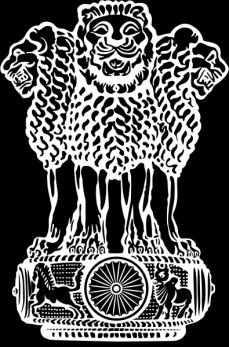
The Minor Pillar Edicts also began around the king's 12th year of rule, spanning into at least his 20th year. It includes texts called The Schism Edicts, which are strong warnings to monks or nuns who would seek to cause schisms in the sangha, telling them that if they caused a division in the order they would be forced to disrobe and live as laypeople once again. There is also the Queen's Edict, where Ashoka insists that credit should be given to his second Queen for her offerings of a mango-grove, a monastery for the sangha, a charitable institution, and other such things. Other pillars, much later and possibly not composed by Ashoka himself, commemorate his pilgramages to Buddhist holy sites. One recounts the time when he visited Lumbini, the birthplace of the Buddha, in his 20th year as king, and notes that he granted the city a considerable tax break. Another, labeled as being ordered in his 20th year as king, tells that Ashoka visited Nigali Sagar in his 14th year in order to expand (for the second time) a stupa honoring Kanakamuni Buddha, one of the ancient Buddhas from previous ages described in the Pali Canon.
Finally, there are the Major Pillar Edicts, which were inscribed at the end of Ashoka's reign, in his 26th and 27th years of kingship. Most don't provide new information, but two of them are pretty important. In the fifth, Ashoka lists animals which are deemed "inviolable," meaning they were protected from harm and killing them was forbidden. Another list of animals are listed as protected on certain days, in order to minimize the harm done to their populations. On these days, these animals are not to be killed or sold, and there are also days on which animals such as bulls and goats are not to be castrated or branded. This edict also declares that, by Ashoka's 26th year as king, he had ordered the release of prisoners 25 times. In the seventh of these edicts, he provides a lengthy list of his efforts to enact "Dharma policies." This includes planting trees along the road to provide shade for travelers and their animals, planting mango-groves for food, wells for public baths, as well as access to public drinking water for animals and humans. Interestingly, he claims that these things are only important insofar as they provide the material security for people to be able to practice morality. It goes on to describe the deployment of Mahamatras to assist religious communities, as well as laypeople. They were also sent to deliver gifts and offerings to those "worthy of charity." Ashoka declares that these actions had inspired his subjects to follow suit, taking up the practice of morality in their own lives, and that through his "conversion" (to Buddhism, presumably) he was able to promote the well-being of living things.7
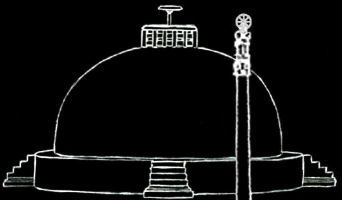
Again, it is difficult to ascertain many of the details of Ashoka's life, especially with regard to things not mentioned in the edicts. Exactly what happened after Ashoka's reign is also hard to say; what is certain is that the Mauryan dynasty began a steady decline after his death, with no king able to restore the state to its former glory, until eventually in 185 BCE the last Mauryan king was killed by one of his own generals named Pushyamitra Shunga, who then established himself as the first king of the new Shunga Dynasty.
Regardless, the legacy of Ashoka's rule at the height of the Mauryan Dynasty is undeniable. He was a generous patron of Buddhism, which thrived under his rule, and his efforts in establishing peaceful contact with foreign kingdoms helped the faith spread further through the world. Furthermore, the epigraphs he placed throughout his kingdom are priceless for the insights they provide into a world which is otherwise obscured by the absence of reliable records, and we may see more evidence of his profound impact on the world when we look at the later histories preserved in various countries such India, Sri Lanka, China, and Tibet, even if they are rife with legends.

In the edicts left behind by King Ashoka, we see the story of a king devastated by the effects of his violence, but more importantly, we see the redemptive power of Buddhist practice and the ideal of a state which places the welfare of its inhabitants above all other concerns. When we compare the testimony of Ashoka's policies and convictions with the noble duties of a Chakravartin described in the Buddhist scriptures, I think it is fair to say that Ashoka was a Chakravartin, or at the very least, was close enough to inspire hope in the possibility of a future Chakravartin. In his reign, he gave people things which are still being fought for in our own modern societies - food security, access to clean water, public welfare, money for the poor, religious tolerance, animal rights, and a commitment to avoid war.
It bears repeating that the primary concern of Buddhism is enlightenment, and as stated throughout the Buddhist scriptures, it is always preferable to renounce the worldly life in order to follow the Buddha's path. However, we must acknowledge the fact that the world will continue to spin even after it has been renounced by faithful disciples, and as such, we may still look to the Buddha for a righteous and noble political theory to help everyone else benefit from the world left behind by the Venerable Ones. In doing so, we will find the endorsement of a monarchy helmed by a benevolent ruler, filled with faith and compassion and a desire to see all living things prosper.
To suggest that the ideal state is a religious monarchy is sure to raise eyebrows, but let me be clear - that is absolutely what I believe. I have never seen any political theory as compassionate as that put forward by the Buddha and realized by Ashoka, and I truly hope to live long enough to see it realized again one day. Perhaps I may be criticized for being idealistic, but when I look at the world right now, idealism is the only viable option I see. The earth is literally being destroyed by greed. Capitalists have consumed the world with war for the entirety of my life, and I have watched my elected representatives do nothing but fan the flames of a fire which feeds on the poor and the oppressed. If it is absurd to long for a benevolent monarch, I say it is all the more absurd to pretend that the way things are is better.
May all beings be free from suffering.
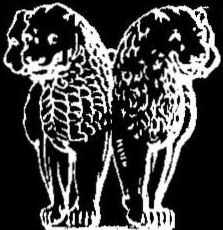
Notes
[1] As far as I'm aware, this legend of the naming ceremony and the prophecy of the wisemen is not found in the suttas. However, in the Lakkhana Sutta (DN 30), the Buddha discusses the 32 Marks, and declares that a person born with these marks will become either a Chakravartin or a Buddha. Therefore, there is nothing in this legend which contradicts well-established Buddhist doctrine.
[2] Women are also listed among the things which were given freely along the lotus pond banks. While we may obviously take issue with this now, it's important to remember that this text is very, very old. When we consider the way Buddhism views sexual misconduct and Right Livelihood, we may also safely assume that this is not to be understood as a non-consensual arrangement.
[3] Little is known for certain about King Porus or his territory. He's only discussed in Greek histories related to Alexander the Great.
[4] Many of these sources dramatically emphasize how cruel and ruthless Ashoka was prior to his conversion to Buddhism, going far beyond what is recorded in the edicts. They are filled with stories of murder, torture, and other such things. The historicity of these stories is dubious, and I believe they were written to emphasize the transformative power of the Buddhist faith (as opposed to competing religions).
[5] To be clear, this does not mean that the edicts are older than the Buddhist scriptures themselves, which were primarily preserved orally until the Common Era.
[6] It is important to note that slavery and indentured servitude were common features of Indian society, as well as the world at large. The Buddha explicitly forbade slavery, as the trade of human beings was considered Wrong Livelihood, though his power to affect this change was limited to his followers. This edict suggests that King Ashoka did not abolish the practice, which is a fair criticism to lobby against him. Still, the edicts seem to suggest that he considered slaves and servants as part of "his children" to whom he was indebted, and it seems reasonable to assume that he also ensured their welfare, at the very least in a way that was progressive respective to other rulers at the time.
[7] If you look around at other sources - which I encourage you to do - you may come across some which are written and propagated by Hindus, disagreeing with the accounts given in Ashoka's edicts. For example, the Hindustan Times reports on a book written by Sanjeev Sanyal, where he tries to undermine the role of Buddhism in Ashoka's reign. He also attempts to demonstrate that Ashoka was a brutal tyrant even after he was said to have converted. People on Twitter have further spread these ideas, and some of them are eager to claim that Ashoka was already a Buddhist when he destroyed Kalinga.
I will not conjecture on the motives of Hindus who push this narrative; I will only ask you to consider that they are uncritically relying on Sri Lankan dating conventions, as well as an Indian biography called the Ashokavadana which is filled with legends and blatantly sectarian stories depicting Jains and Ajivikas being executed. These records are at odds with the edicts left behind earlier by Ashoka himself, and I think it is fair to question their historicty.
Sanjeev also takes issue with the fact that none of the inscriptions placed in Kalinga contained Major Rock Edict 13, in which Ashoka expresses his remorse for the Kalinga War. He bluntly implies that the reason for this is that King Ashoka was not truly remorseful, and the 13th Rock Edict was only used as propaganda in distant territories too far removed to know better. I would like to point out that several other edicts, concerned with more innocuous topics, were also omitted from the Kalinga monuments. In addition, Major Rock Edict 14, which was present in Kalinga, openly acknowledges that the edicts were not inscribed in their entirety at every location. It lists several reasons for this, including the particularities of certain localities and the locals disliking the message/motive of certain edicts. Imagining a conspiracy instead of accepting the more obvious explanation - that placing monuments recounting a war story which was still fresh in the minds of the people who lived through it and saying "sorry!" in the territory you had previously destroyed may have been a little contentious - seems foolish to me. Furthermore, the other edicts which were present at Kalinga still demonstrated Ashoka's conviction to avoid further bloodshed and provide necessities for every citizen. Edict 6 specifically mentions Ashoka's debt to living beings, which he is working to repay through ensuring the welfare of his citizens.